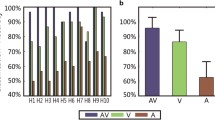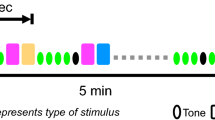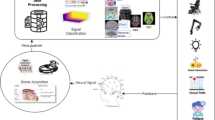Abstract
The attention to cueing among nurses with anxiety affects their nursing quality seriously. Nevertheless, the neural mechanism of attention under anxiety among nurses has not been revealed. In this study, we utilized the event-related potential (ERP) and functional brain networks to investigate the neural mechanism of the cueing attention differences between anxiety and non-anxiety nurse groups (AG-20 nurses; NAG-20 nurses) in the spatial cueing task. The results revealed that in the invalid cues (144 trials), longer reaction times, larger P2 amplitudes, and more linkages between the right frontal and parietal areas were found in AG compared to NAG. In the valid cues (288 trials), there were no significant behavioral and neural differences between the two groups. The AG in the invalid cues showed slower response times, larger P2 and N5 amplitudes, and denser linkages originating from the occipital cortex than those in the valid cues. The convolutional neural network was trained for discriminating between the anxiety nurses and the normal ones, with the average accuracy being 0.76. The findings provided a potential physiological biomarker to predict the anxiety group who need to give more psychological attention. Nurse leaders maybe get more information for offering solutions to retain mental health among nurses.
Graphical abstract








Similar content being viewed by others
References
Coffey LC, Skipper JK, Jung FD (1988) Nurses and shift work: effects on job performance and job-related stress. J Adv Nurs 13:245–254
Eysenck M, Derakshan N, Santos R, Calvo MG (2007) Anxiety and cognitive performance: attentional control theory. Emotion 7:336–353
Eysenck MW, Byrne A (1992) Anxiety and susceptibility to distraction. Personality Individ Differ 13:793–798
Mohanty A, Egner T, Monti JM, Mesulam MM (2009) Search for a threatening target triggers limbic guidance of spatial attention. J Neurosci 47:S182–S182
Hollingworth A, Maxcey-Richard AM, Vecera SP (2011) The spatial distribution of attention within and across objects. J Exp Psychol Human 38:135–151
Girardi G, Antonucci G, Nico D (2013) Cueing spatial attention through timing and probability. Cortex 49:211–221
Shaqiri A, Anderson B (2012) Spatial probability cuing and right hemisphere damage. Brain Cogn 80:352–360
Henderson JM (1991) Stimulus discrimination following covert attentional orienting to an exogenous cue. J Exp Psychol Hum Percept Perform 17:91–106
Hayward DA, Ristic J (2013) Measuring attention using the Posner cuing paradigm: the role of across and within trial target probabilities. Front Hum Neurosci 7:1–11
Müller JH, Rabbitt PM (1989) Reflexive and voluntary orienting of visual attention: time course of activation and resistance to interruption. J Exp Psychol Human 15:315–330
Lang PJ, Davis M, Ohman A (2000) Fear and anxiety: animal models and human cognitive psychophysiology. J Affective Disorders 61:137–159
Moser JS, Becker MW, Moran TP (2012) Enhanced attentional capture in trait anxiety. Emotion 12:213
Derakshan N, Ansari TL, Hansard M, Shoker L, Eysenck MW (2009) Anxiety, inhibition, efficiency, and effectiveness an investigation using the antisaccade task. Exp Psychol 56:48–55
Ansari TL, Derakshan N, Richards A (2008) Effects of anxiety on task switching: evidence from the mixed antisaccade task. Cogn Affective Behav Ne 8:229–238
Corbetta M, Shulman GL (2002) Control of goal-directed and stimulus-driven attention in the brain. Nat Rev Neurosci 3:201
Tian Y, Ma L (2020) Auditory attention tracking states in a cocktail party environment can be decoded by deep convolutional neural networks. J Neural Eng 17:036013
Zhang R, Yao D, Valdés-Sosa PA et al (2015) Efficient resting-state EEG network facilitates motor imagery performance. J Neural Eng 12:066024
Si Y, Wu X, Li F et al (2018) Different decision-making responses occupy different brain networks for information processing: a study based on EEG and TMS. Cereb Cortex 29:4119–4129
Si Y, Jiang L, Tao Q, Chen C, Xu P (2019) Predicting individual decision-making responses based on the functional connectivity of resting-state EEG. J Neural Eng 16:066025
Li F, Jiang L, Liao Y et al (2021) Brain variability in dynamic resting-state networks identified by fuzzy entropy: a scalp EEG study. J Neural Eng 18:046097. https://doi.org/10.1088/1741-2552/ac0d41
Li P, Liu H, Si Y et al (2019) EEG based emotion recognition by combining functional connectivity network and local activations. IEEE Trans Biomed Eng 66:2869–2881. https://doi.org/10.1109/tbme.2019.2897651
Luo C, Li F, Li P et al (2022) A survey of brain network analysis by electroencephalographic signals. Cogn Neurodyn 16:17–41. https://doi.org/10.1007/s11571-021-09689-8
Rajan A, Siegel SN, Liu Y, Bengson J, Mangun GR, Ding M (2019) Theta oscillations index frontal decision-making and mediate reciprocal frontal–parietal interactions in willed attention. Cereb Cortex 29:2832–2843
Bengson JJ, Kelley TA, Mangun GR (2015) The neural correlates of volitional attention: a combined fMRI and ERP study. Hum Brain Mapp 36:2443–2454
Wang XY, Li C, Zhang R, Wang L, Tan JL, Wang H (2022) Intelligent extraction of salient feature from electroencephalogram using redundant discrete wavelet transform. Front Neurosci 16:921642. https://doi.org/10.3389/fnins.2022.921642
Hennen T, Elias A, Nodin JF et al (2022) A high throughput generative vector autoregression model for stochastic synapses. Front Neurosci 16:941753. https://doi.org/10.3389/fnins.2022.941753
Li P, Liu H, Si Y et al (2019) EEG based emotion recognition by combining functional connectivity network and local activations. IEEE Trans Biomed Eng 66:1558–2531. https://doi.org/10.1109/tbme.2019.2897651
Xu P, Xiong X, Xue Q et al (2014) Differentiating between psychogenic nonepileptic seizures and epilepsy based on common spatial pattern of weighted EEG resting networks. IEEE Trans Biomed Eng 61:1747–1755. https://doi.org/10.1109/tbme.2014.2305159
Ehteshami Bejnordi B, Veta M, Johannes van Diest P et al (2017) Diagnostic assessment of deep learning algorithms for detection of lymph node metastases in women with breast cancer. JAMA 318:2199–2210. https://doi.org/10.1001/jama.2017.14585
Lumini A, Nanni L (2018) Convolutional neural networks for ATC classification. Curr Pharm Des 24:4007–4012. https://doi.org/10.2174/1381612824666181112113438
Liimatainen K, Huttunen R (2021) Convolutional neural network-based artificial intelligence for classification of protein localization patterns. Biomolecules 11:264. https://doi.org/10.3390/biom11020264
Fu R, Chen YF, Huang Y et al (2022) Symmetric convolutional and adversarial neural network enables improved mental stress classification from EEG. IEEE Trans Neural Syst Rehabil Eng 30:1384–1400. https://doi.org/10.1109/tnsre.2022.3174821
Borra D, Magosso E (2021) Deep learning-based EEG analysis: investigating P3 ERP components. J Integr Neurosci 20:791–811. https://doi.org/10.31083/j.jin2004083
Jabar S, Anderson B (2017) Orientation probability and spatial exogenous cuing improve perceptual precision and response speed by different mechanisms. Front Psychol 8:183
Spielberger CD (1983) Manual for the state-trait anxiety inventory (STAI: Form Y). Consulting Psychologists Press, PaloAlto
Barnes LL, Harp D, Jung WS (2002) Reliability generalization of scores on the Spielberger state-trait anxiety inventory. Educ Psychol Meas 62:603–618
Yao D (2017) Is the surface potential integral of a dipole in a volume conductor always zero? A cloud over the average reference of EEG and ERP. Brain Topogr 30:161–171
Li PY, Gao X, Zhu PC, Huang WJ, Li CB, Si YJ, Xu P, Tian Y (2022) An adaptive EOG removal method based on local density. J Electron Inform Technol 44:464–467
Mahajan R, Morshed BI (2015) Unsupervised eye blink artifact denoising of EEG data with modified multiscale sample entropy, Kurtosis, and wavelet-ICA. IEEE J Biomed Health Inform 19:158–165. https://doi.org/10.1109/jbhi.2014.2333010
Yasoda KPR, Bhuvaneshwari KS, Venkatachalam K (2020) Automatic detection and classification of EEG artifacts using fuzzy kernel SVM and wavelet ICA (WICA). Soft Comput 24:16011-16–16019
Aydin S (2008) Tikhonov regularized solutions for improvement of signal-to-noise ratio in case of auditory-evoked potentials. Med Biol Eng Comput 46:1051–1056. https://doi.org/10.1007/s11517-008-0385-0
Aydin S (2009) A new combination: scale-space filtering of projected brain activities. Med Biol Eng Comput 47:435–440. https://doi.org/10.1007/s11517-009-0450-3
Yi C, Yao R, Song L et al (2021) A novel method for constructing EEG large-scale cortical dynamical functional network connectivity (dFNC): WTCS. IEEE Trans Cybern. https://doi.org/10.1109/TCYB.2021.3090770
Mertes C, Schneider D (2018) Subtle distinctions: how attentional templates influence EEG parameters of cognitive control in a spatial cuing paradigm. Front Hum Neurosci 12:113
Srinivasan R, Nunez PL, Silberstein RB (1998) Spatial filtering and neocortical dynamics: estimates of EEG coherence. IEEE T Bio-Med Eng 45:814–826
Li F, Wang J, Liao Y et al (2019) Differentiation of Schizophrenia by combining the spatial EEG brain network patterns of rest and task P300. IEEE T Neur Sys Reh 27:594–602
Zhu X, Li P, Li C, Yao D, Zhang R, Xu P (2019) Separated channel convolutional neural network to realize the training free motor imagery BCI systems. Biomed Signal Proces 49:396–403
Ngo MK, Spence C (2010) Crossmodal facilitation of masked visual target discrimination by informative auditory cuing. Neurosci Lett 479:102–106
Chaminade T, Okka MM (2013) Comparing the effect of humanoid and human face for the spatial orientation of attention. Front in Neurorobotics 7:12
Hartley CA, Phelps EA (2012) Anxiety and decision-making. Biol Psychiat 72:113–118
Mathews A, Macleod C (2005) Cognitive vulnerability to emotional disorders. Annu Rev Clin Psychol 1:167–195
Savid RB, Coombes SA, Janelle CM (2007) Effects of trait anxiety and emotional state on simple and choice reaction time. J Sport Exercise Psy 29:S124–S124
Li F, Chen B, Li H et al (2016) The time-varying networks in P300: a task-evoked EEG study. IEEE T Neur Sys Reh 24:725–733
Potts GF, Patel SH, Azzam PN (2004) Impact of instructed relevance on the visual ERP. Int J Psychophysiol 52:197–209
Gajewski PD, Stoerig P, Falkenstein M (2008) ERP–correlates of response selection in a response conflict paradigm. Brain Rese 1189:127–134
Potts GF (2004) An ERP index of task relevance evaluation of visual stimuli. Brain Cogn 56:5–13
Potts GF, Tucker DM (2001) Frontal evaluation and posterior representation in target detection. Brain Res Cogn Brain Res 11:147–156
Pascalis VD, Strelau J, Zawadzki B (1999) The effect of temperamental traits on event-related potentials, heart rate and reaction time. Personality Individ Differ 26:441–465
Yuan J, Zhang Q, Chen A et al (2007) Are we sensitive to valence differences in emotionally negative stimuli? Electrophysiological evidence from an ERP study. Neuropsychologia 45:2764–2771
Amodio DM, Frith CD (2006) Meeting of minds: the medial frontal cortex and social cognition. Nat Rev Neurosci 7:268–277
Harmon-Jones E, Gable PA, Peterson CK (2010) The role of asymmetric frontal cortical activity in emotion-related phenomena: a review and update. Biol Psychol 84:451–462
Zhang X, Zhang S, Lu B et al (2022) Dynamic corticomuscular multi-regional modulations during finger movement revealed by time-varying network analysis. J Neural Eng 19:036014. https://doi.org/10.1088/1741-2552/ac6d7c
Wei L, Duan X, Yang Y et al (2011) The synchronization of spontaneous BOLD activity predicts extraversion and neuroticism. Brain Res 1419:68–75
Szczepanski SM, Crone NE, Kuperman RA et al (2014) Dynamic changes in phase-amplitude coupling facilitate spatial attention control in fronto-parietal cortex. PLoS Biol 12:e1001936
Funding
The work was supported by the National Natural Science Foundation of China (#61901077), the Program for one thousand Zhongyuan Talents (204200510020), the Key Scientific Research Project of Universities in Henan Province (22A190002), and the China Postdoctoral Science Foundation (2021M700701).
Author information
Authors and Affiliations
Corresponding authors
Ethics declarations
Ethical approval and consent to participate
Written informed consent was signed for the subject in the current study. The study was conducted according to the rules of the Declaration of Helsinki and approved by the Institution Research Ethics Board of Xinxiang Medical University (XYLL-2020147).
Conflict of interest
The authors declare no competing interests.
Additional information
Publisher's note
Springer Nature remains neutral with regard to jurisdictional claims in published maps and institutional affiliations.
Rights and permissions
Springer Nature or its licensor (e.g. a society or other partner) holds exclusive rights to this article under a publishing agreement with the author(s) or other rightsholder(s); author self-archiving of the accepted manuscript version of this article is solely governed by the terms of such publishing agreement and applicable law.
About this article
Cite this article
Si, Y., Li, P., Wang, X. et al. Cueing effect of attention among nurses with different anxiety levels: an EEG study. Med Biol Eng Comput 61, 2269–2279 (2023). https://doi.org/10.1007/s11517-023-02829-8
Received:
Accepted:
Published:
Issue Date:
DOI: https://doi.org/10.1007/s11517-023-02829-8




